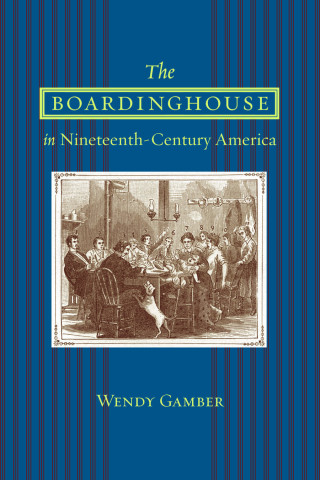
Reviews
Ms. Gamber paints an exhausting picture of the typical landlady's work and expense and the residents' grumblings.
Gamber does a good job introducing and discussing this once-ubiquitous institution.
A lively account.
This book is an important scholarly contribution that helps us understand how the most basic challenges of life... had a profound impact on the American past. It is a model of creative social history that encourages scholars to transcend traditional intellectual boundaries and begin new conversations in a fragmented academic world.
Crucial reading for scholars interested in the nineteenth-century city, women's work and entrepreneurship, and the development of domestic ideology.
An excellent and important book that reframes the meaning of the home.
A superb study. Gamber has identified a major lacuna in our historical understanding of nineteenth-century domesticity, women's work, family, and urban history, and filled it with rich detail and a nuanced treatment of class and ethnic differences.
Gamber skillfully integrates analysis of the changing realities and perceptions of boardinghouse life. She is sensitive to the contradictions between domestic ideals and actualities and teases out the broader significance of these oppositions. Moreover, her narrative strategy provides nice continuity across the book's chapters, permitting the analysis to explore broad issues while being grounded in stories about concrete individuals.
Gamber offers a very valuable account of the evolution of business, society, and culture in the U. S. by examining the development of boardinghouses in the full contexts of nineteenth-century American history. Thoroughly researched in a wide range of primary and secondary sources, The Boardinghouse in Nineteenth-Century America tells an important story about American life.
Centers on the important recognition that the 'golden age of the bourgeois home' was also 'the age of the boardinghouse,' when an estimated one-third to one-half of all urban residents either took in boarders or were themselves boarders. Boardinghouses, Wendy Gamber demonstrates, were unsavory counterparts to the idealized home; they offered a constant reminder that the much-vaunted distance between the home-as-haven and the venal, worldly marketplace was a fiction. The Boardinghouse in Nineteenth-Century America uncovers in rich detail the social experiences of boardinghouse life by various sorts of residents—young and old, female and male, middle-class and working-class—and various sorts of boardinghouse keepers, ranging from shrewdly ambitious businesswomen to impoverished widows. This valuable and engaging study takes an understudied phenomenon of U.S. urban history and draws from it a rich study of the American understanding of 'home,' and the ways that market and labor forces have made it vulnerable from its first emergence as the summum bonum of middle-class life.
Book Details
Acknowledgments
Introduction: Houses and Homes
1. Away from Home
2. Keeping House
3. "The Most Cruel and Thankless Way a Woman Can EarnHer Living"
4. Boarders' Beefs
5. Nests of Crime and Dens of Vice
6.
Acknowledgments
Introduction: Houses and Homes
1. Away from Home
2. Keeping House
3. "The Most Cruel and Thankless Way a Woman Can EarnHer Living"
4. Boarders' Beefs
5. Nests of Crime and Dens of Vice
6. "Will They Board, or Keep House?"
7. Charity Begins at Home
Epilogue: "Decay of the Boarding-House"
Notes
Essay on Sources
Index






